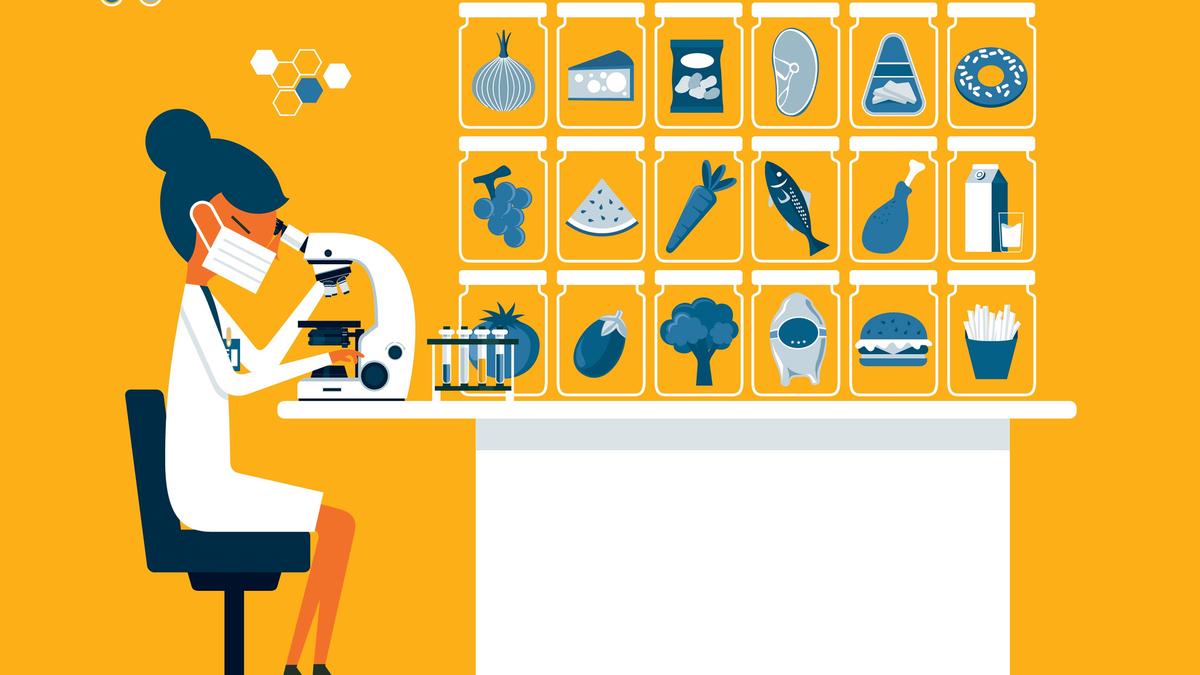Varghese, A., Gusarov, I., Gamallo-Lana, B. et al, ‘Unravelling cysteine-deficiency-associated rapid weight loss’, Nature (2025). doi.org/10.1038/s41586-025-08996-y
In the 1930s, when scientists were beginning to uncover the molecular basis of nutrition, they already knew that proteins were a vital part of the diet, but they didn’t fully understand why. More specifically, they didn’t know whether all 20 amino acids, the building blocks of proteins, were equally important or if only some of them were crucial for human health.
This question was answered in 1937 by William Rose, who conducted a series of experiments in which he fed rats individual amino acids instead of whole proteins. By systematically omitting one amino acid at a time from the rats’ diets, he was able to identify which ones were truly indispensable. These he called “essential” amino acids: they must be obtained through food because the body cannot produce them. The others, which the body can synthesise on its own, were deemed “non-essential”.
The nine essential amino acids are histidine, isoleucine, leucine, lysine, methionine, phenylalanine, threonine, tryptophan, and valine.
Low-nutrition state
Rose’s work was one of the founding pillars of modern nutrition science. Nearly a century later, as the world struggles with rising obesity rates, this knowledge has become more relevant. Diets that promote weight loss without compromising overall health are being rigorously studied and tested around the world.
One such study appeared in Nature on May 21, and it reported rather surprising results. The researchers found that removing just one amino acid, cysteine, from the diet of mice led to a dramatic and rapid loss of 30% of the body weight in a week. The results are surprising because cysteine is not an essential amino acid.
Multiple researchers have explored the effects of essential amino acid withdrawal on weight loss. The idea behind these studies is that when these amino acids are removed from the diet, the body’s inability to synthesise them reduces protein synthesis. The body interprets this to mean it is in a low-nutrition state and triggers fat burning. The effect has been reported in mice after deprivation of leucine, Isoleucine, valine, tryptophan and phenylalanine.
Interestingly, the effect is also observed when two non-essential but important amino acids, methionine and cysteine, are withdrawn from the diet. Methionine and cysteine are the only two amino acids that contain sulphur. The reactive nature of sulphur allows these amino acids to play key roles in protein folding and function. However, despite their nutritional importance, studies in mice have demonstrated that methionine restriction improves lifespan and protects against metabolic diseases.
Challenging to study
Building on these findings, one study published in the Journal of Nutrition, Health and Ageing in 2023 showed that a diet with very small amounts of methionine and cysteine had a significant impact on weight loss in humans. The study reported no adverse effects of the diet on participants, suggesting that the results could be translated to humans.
However, several questions remained to be addressed. Chief among them was the role of cysteine itself on weight loss.
Studying cysteine withdrawal is challenging because it’s a non-essential amino acid. Removing cysteine from the diet won’t allow us to study the effects of its deficit because the body will simply make more. To circumvent this problem, the authors of the new Nature study genetically engineered mice so that they lacked the ability to produce cysteine naturally. This means, for these mice, cysteine is now an essential amino acid that must be obtained through their diet.
Profound effect
The authors proceeded to withdraw each of the nine essential amino acids and cysteine and methionine individually from their diet and observed the effects on metabolic health. None of the essential amino acids or methionine had an effect as profound as the omission of cysteine: 30.6% loss of body weight in one week on average. The authors also noted that the lost weight was recovered when they restored cysteine in the diet. The finding indicates that cysteine rather than methionine is more important among the sulphur-containing amino acids.
The team also reported that the effect was observed only in genetically modified mice that couldn’t make cysteine. In normal mice, cysteine restriction had no effect, since they didn’t depend on their diets for access to cysteine.
Importantly, the authors found that despite its effects on weight loss, withdrawing cysteine from the diet had other side effects, such as higher oxidative stress — the build-up of harmful variants of oxygen — because cysteine is a critical precursor for glutathione, one of the body’s main antioxidants.
Experts therefore advise caution. Dr. Jayashree Gopal, consultant endocrinologist at DiabEndoIndia, Chennai, said that while the paper is fascinating in terms of the diet’s ability to convert white fat into brown fat, a marker of improved metabolic activity, it is still too early to translate the findings into clinical practice.
“Firstly, if you remove [cysteine], the body is going to anyway replenish it. Secondly, because it is part of a very potent antioxidant system, we should not be interfering with nature’s balances until we know more about it. And third, we have to keep reiterating that the study is only done in genetically modified mice. Mouse physiology and human physiology are very, very different,” she said. Still, she added a note of optimism, “To extrapolate from [the paper], it is a promising start. Maybe something may emerge from this 10 years down the line, but we are nowhere near that…”
Dr. Gopal’s words echo a fundamental principle of science, one particularly relevant to the study: while the research is commendable for uncovering the nuanced role of a single amino acid in fat metabolism, it also underscores the reality that scientific progress is often incremental.
Arun Panchapakesan is an assistant professor at the Y.R. Gaitonde Centre for AIDS Research and Education, Chennai.
Published – July 15, 2025 08:30 am IST
